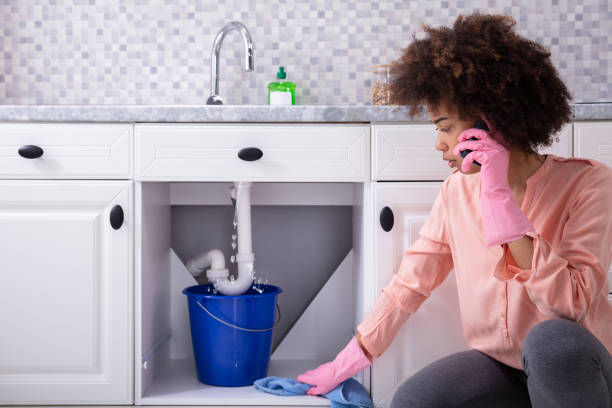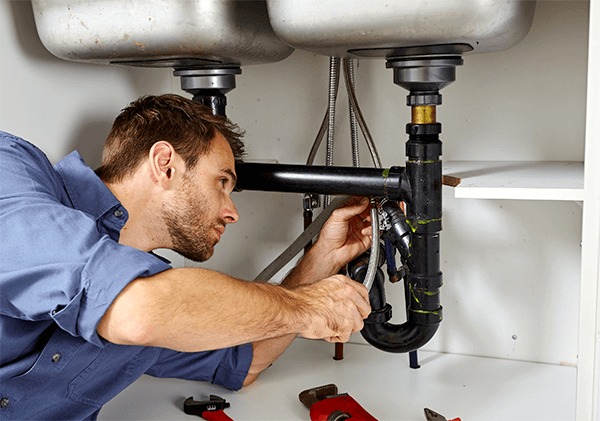The author is making a number of great observations regarding Plumbing Problems In Old Homes in general in this post directly below.

Older homes often feature appeal, character, and background, however they can also bring a host of pipes problems. Whether you're dealing with maturing pipes, low water pressure, or leakages, knowing exactly how to address these typical problems is vital to preserving a secure and functional home. In this overview, we'll explore the normal pipes difficulties encountered by older homes and supply practical options to maintain your plumbing in leading form.
Comprehending Usual Plumbing Concerns
Aging Pipelines
One of one of the most common problems in older homes is maturing pipelines. Depending on the age in which your home was constructed, the pipelines might be made from products that have actually worn away in time, such as galvanized steel, cast iron, or even lead. These materials can corrode, become breakable, or develop leaks, bring about water damage and possible health hazards.
Water Quality Testing
Older pipes can impact the quality of your water. Conduct a water high quality examination to look for contaminants such as lead, corrosion, or various other pollutants that might be presented by aging pipes.
Solutions for Usual Pipes Issues
Changing Aging Pipelines
If your home has old, weakening pipes, take into consideration changing them with modern materials like copper or PEX. This can be a significant investment, however it will certainly protect against future issues and improve the security and dependability of your plumbing system.
Repairing Low Water Stress
To deal with low tide stress, start by cleaning or replacing old components and getting rid of mineral build-up in the pipelines. If the trouble persists, it may be required to change areas of rusty pipelines.
Fixing and Changing Dripping Pipelines
For small leaks, you can use pipe clamps or epoxy putty as a short-term repair. Nevertheless, it's finest to change dripping pipelines completely to prevent additional damages.
Upgrading Components
Updating old components to contemporary, water-efficient designs can enhance your home's plumbing performance and decrease water usage. Search for fixtures with the WaterSense label for the best efficiency.
Dealing with Pipeline Deterioration
If your pipes are corroded, changing them with corrosion-resistant products like copper, PVC, or PEX is the most effective option. Routine inspections and water quality upkeep can aid avoid further corrosion.
Low Tide Pressure
If you're experiencing low tide pressure, maybe because of natural resources, deterioration inside the pipes, or old components that are no longer functioning efficiently. This can be a significant trouble, specifically in areas like showers and sinks.
Leaking Pipes
Leakages are one more frequent concern in older homes, usually triggered by corroded or worn-out pipelines. Also small leakages can cause significant water damages, mold and mildew growth, and increased water costs if not addressed without delay.
Out-of-date Components
Out-of-date pipes fixtures such as faucets, commodes, and showerheads not only look old however may additionally be much less effective, prone to leakages, or incompatible with modern-day pipes standards.
Pipeline Corrosion
Deterioration is a common trouble in older pipelines, especially those made from galvanized steel or actors iron. Corroded pipelines can restrict water flow, create discoloration, and ultimately cause leaks or pipe ruptureds.
Assessing the Condition of Your Pipes
Examining Visible Pipelines
Start by checking any visible pipelines in your home, such as those in basements, crawl spaces, or under sinks. Look for indications of deterioration, leaks, or rust, which can suggest underlying concerns.
Checking for Leaks
Check for leakages by evaluating areas around faucets, commodes, and under sinks. You can also monitor your water meter prior to and after a period of no water utilize to identify covert leakages.
When to Call a Specialist
While some pipes issues can be managed with do it yourself solutions, there are times when it's best to call a professional. If you're handling major leakages, comprehensive corrosion, or are uncertain concerning the condition of your pipes, an accredited plumbing professional can provide skilled analysis and repair work.
Preventive Maintenance Tips
Regular Evaluations
On a regular basis inspect your pipes system for indicators of damage. Catching issues early can protect against pricey repairs down the line.
Water Pressure Policy
Ensure your water pressure is within the suggested array to prevent stressing your pipelines and fixtures. A plumbing professional can set up a stress regulator if required.
Water Top Quality Maintenance
Set up water filters or conditioners if your water quality is poor. This can secure your pipelines and components from damages brought on by tough water or pollutants.
Positive Pipeline Replacement
If your home has very old pipelines, take into consideration aggressive substitute before major concerns emerge. This can conserve you from emergency situation repair work and water damage.
Conclusion
Managing pipes problems in older homes needs a combination of vigilance, preventive upkeep, and timely upgrades. By understanding the common obstacles and recognizing when to look for professional aid, you can guarantee your plumbing system remains useful and trustworthy for several years to find.
Common Plumbing Problems in Older Homes
Older homes have a ton of character from the antique brass faucets, clawfoot tubs, and colorful tile to the Dutch doors, transom windows, and archways, there s a lot to love. Unfortunately, that character often includes old plumbing that s past its prime and isn t fit to support modern appliances.
If you own an older home and are suspicious about strange noises (ghosts?), smells, leaks, or frequent clogs in your plumbing, it's possible that your home s old age is to blame.
Learn more about the most common old house plumbing problems, and what can be done to fix them!
What Are the Most Common Plumbing Problems in Old Houses?
Old, corroded piping. Most older pipes are made of material that corrodes and rusts more easily. Even if over the years some of that piping was replaced with better material, the rest may be damaged or repaired with lower-quality material. Though expensive, it may be the best option to re-pipe your plumbing especially if there s rust or lead in your water. Slow drains. This could be the result of many issues, but most likely because of pipe bellies. These are sags in your drainpipes that happen as your home settles and shifts downward over time, putting pressure on your pipes and creating negative slopes. This can restrict water from flowing correctly through them and result in slow drains. Frequent clogging. As you might expect, pipe bellies can also lead to frequent clogging. Another reason for clogging could be due to buildup over time, or blockages from sediment and root growth. Scheduling a drain inspection and drain unclogging service can eliminate this issue. Damaged or failing sewer lines. Old homes are more likely to have foundational shifts and tree root overgrowth. This can put a lot of pressure on and in your sewer lines, leading to damage. Another common reason for failed sewer lines is because of modern appliance upgrades. Newer appliances put more strain on sewer lines, and if your old pipes aren t equipped to handle this, it can result in damage. If you have any wastewater backup, slow drains, or soft spots in your yard, you may need sewer line replacement. Worn or outdated fixtures. Plumbing fixtures old or new aren t built to last forever. Even if your fixtures seem like they re working well, it s best to check the wear on any internal parts. Minor wear and tear over time can lead to more costly leaks and plumbing issues. Our experts can perform a plumbing inspection for any part of your home s plumbing. Improper installations or repairs. Whether your plumbing was installed a hundred years ago, installed incorrectly, repaired incorrectly, or repaired with outdated materials, this can affect the long-term stability of your plumbing. In older homes especially, having your plumbing inspected is vital to preventing damage. What Are Old Plumbing Pipes Made Of?
Galvanized steel. Most often used between the 1930s and the 1980s, this piping material was discovered later in the 1990s to be prone to rust and corrosion, releasing lead into the water, which is dangerous to consume. Copper. Most homes built around the 1960s are likely to have copper piping. Unlike galvanized steel, copper is one of the most durable materials for plumbing pipes. The issue with this material is the risk of lead, which could be present in the piping itself or the solder applied to the joints and fittings. PVC. This material is still used today and was often used in older homes where piping was replaced because it was easy and inexpensive to install. PVC is also very durable, lead-free, resistant to rust and corrosion, and handles high water pressure well. The downside is that hot water can make it warp. How to Fix Plumbing Problems in Old Homes
Have your plumbing inspected. Before you begin or schedule any type of repair, schedule a plumbing inspection. An expert will be able to properly identify all the issues in your plumbing and the best solution to avoid further damage. Get your plumbing repaired or replaced as needed. Depending on the issues found with your plumbing, you may need minor repairs or larger replacements. Make sure these issues are addressed before you tackle any smaller issues. Remove any clogs or buildup. It s likely your old pipes are clogged with debris, mineral buildup, hair, tree roots, and more. Having your drainpipes cleaned will improve overall drainage and help prevent future leaks. Replace old fixtures. Before replacing any fixtures, check with your local plumber first. Not only can new fixtures strain your old plumbing pipes, but installing them incorrectly can lead to costly damage.

As a passionate reader about , I imagined sharing that editorial was smart. Enjoyed our entry? Please share it. Let another person locate it. I am grateful for being here. Kindly check our site back soon.
Request A Quote